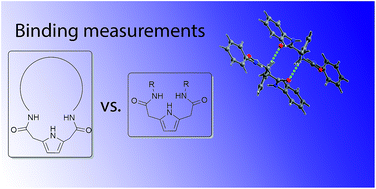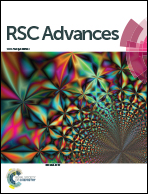A hybrid macrocyclic anion receptor exploiting the pyrrole-2,5-diacetamide unit†
Abstract
We report the synthesis of both macrocyclic and linear derivatives of pyrrole-2,5-diacetic bisamides, and the studies of their anion binding properties, which are further compared with the properties of similar derivatives bearing dipicolinic or isophthalic moieties. The new macrocyclic compound built on pyrrole-2,5-diacetic bisamide was found to be an efficient receptor for H2PO4− and PhCOO−, even in DMSO-d6 + 0.5% H2O (v/v), with changed relative selectivity toward a series of anions with respect to its parental analogues. The anion binding properties of the linear derivatives of pyrrole-2,5-diacetic bisamide, in turn, were found to strongly depend on the pKa of the amide NH protons, which can be modulated through the introduction of various substituents.



 Please wait while we load your content...
Please wait while we load your content...